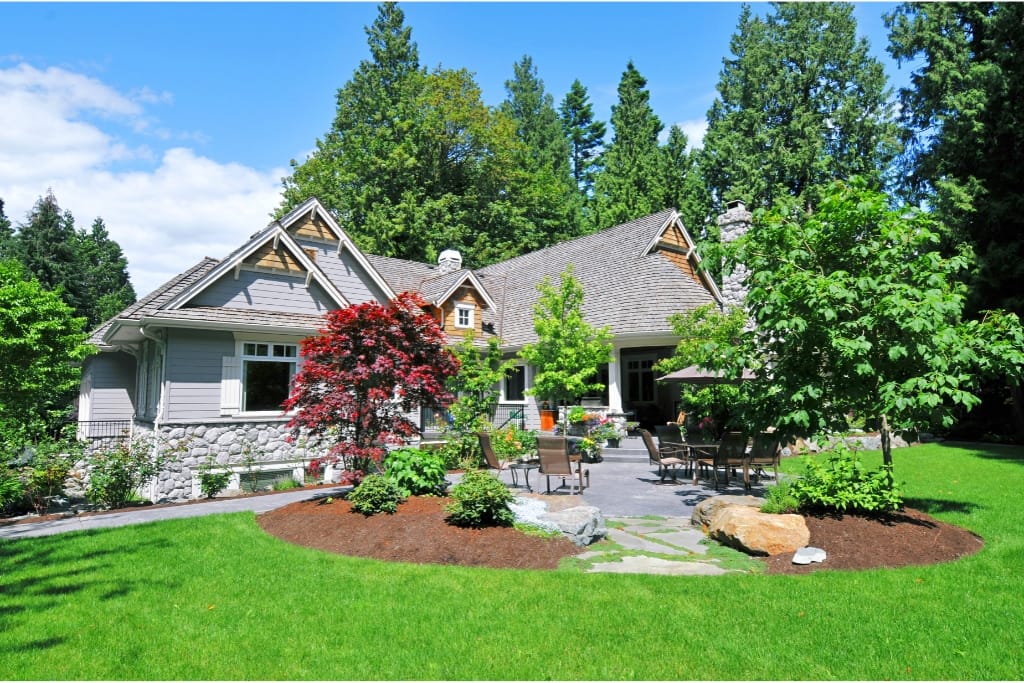Have you ever looked at your neighbor’s yard and wished yours could look just as nice?
Well, it is time to stop daydreaming and start doing it!
Landscaping is a great way to improve your home’s curb appeal and value.
Plus, it is a fun hobby that gets you outside in the fresh air.
If you are new to landscaping, then these tips are for you!
1)) Get to Know Your Yard
The first step in any landscaping project is getting to know your yard.
Take note of the sun’s path throughout the day and determine which areas are in direct sunlight and which are in shade.
This information will be helpful when it comes time to choose plants.
You’ll also want to consider the size and shape of your yard as well as any existing features you may want to incorporate into your design (e.g., trees, fencing, etc.).
2)) Plan Your Space
Before you begin your landscaping journey, putting a plan together for your space is key.
You will need to take measurements of the area you want to cover and make a sketch of the design.
Once you have a plan, you can begin to select the plants and other materials you will need.
Don’t forget to account for things like sunlight and irrigation when choosing your plants.
3)) Start with Small Projects
Tackling a large landscaping project can be overwhelming, so it’s best to start small and gradually build on your successes.
Try adding some potted plants or working on one specific area of your yard at a time.
Not only will this help you stay within budget, but it will also give you a sense of accomplishment as you check each task off your list.
4)) Choose Low-Maintenance Plants
When you are picking out plants, choose low-maintenance varieties.
You do not want to spend all of your time taking care of your landscaping, so pick plants that are drought-resistant and do not require a lot of pruning.
Some easy-to-care-for plants include daylilies, lavender, and sedum.
5)) Prepare Your Soil
Healthy plants begin with healthy soil.
If your soil is compacted or doesn’t drain well, it could be preventing your plants from getting the nutrients they need to thrive.
Fertilize and aerate your soil before planting to encourage strong root growth and prevent problems down the road.
6)) Install a Drip Irrigation System
A drip irrigation system is a great way to water your plants without spending hours outside with a hose.
These systems slowly release water directly to the roots of your plants, so they can absorb it more effectively.
Plus, they use less water overall, which is great for both your wallet and the environment.
7)) Use Mulch
Mulch is one of the best tools for keeping your landscaping looking neat and tidy.
It helps suppress weeds, retains moisture, and adds nutrients to the soil.
You can find mulch in bags at most home improvement stores.
Just make sure to spread it evenly over the surface of your landscaped area.
8)) Get Creative with Containers
Don’t have space for a full garden?
No problem!
You can still enjoy all the benefits of landscaping by getting creative with nice garden containers.
Potted plants are easy to care for and can be moved around depending on the season or your design whims.
And, if you choose pretty pots, they can also add a decorative element to your space.
Conclusion
Landscaping is a great way to improve your home’s value and curb appeal.
And, it does not have to be expensive or time-consuming.
Just remember to start with a plan, choose low-maintenance plants, and work on one area at a time.
By following these simple tips, you can easily create a beautiful landscape that will make all your neighbors jealous.
So, what are you waiting for?
Get started today!








